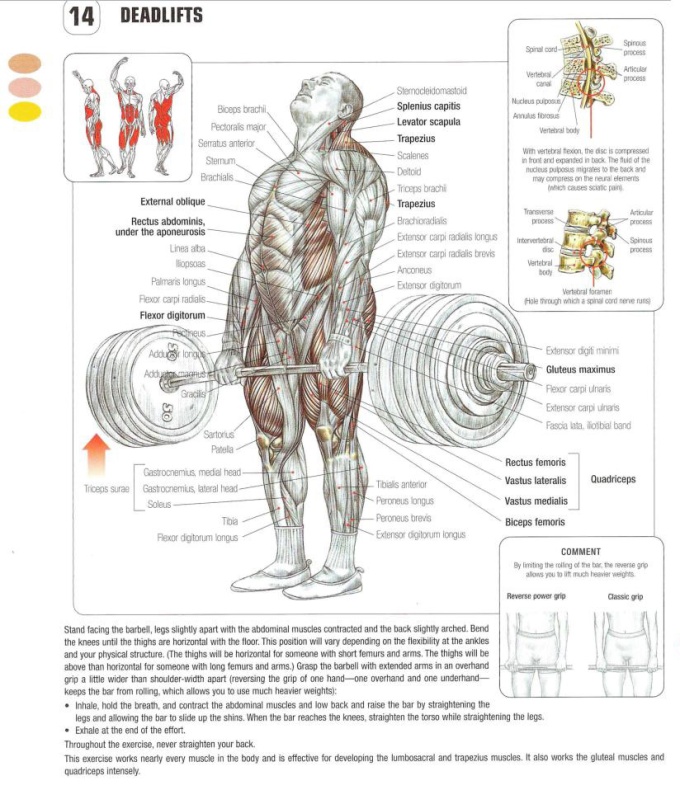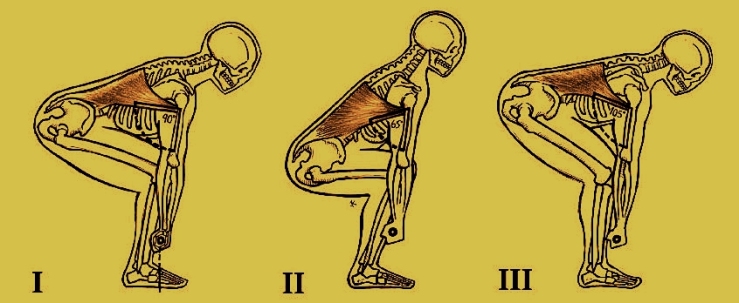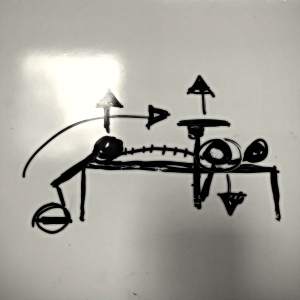My thoughts on the Deadlift have changed somewhat, especially in regards to coaching it. I use to walk up set the bar right over my mid foot, bend down grab the bar, set my back and tuck my pelvis and then lift. My hips were high, my back would never feel great, and I couldn’t really get the movement to sync with my planned training. In other words: my Deadlift felt like shit, it looked like shit, and it was shit.

I think my biggest frustration with this was that the Deadlift was the first thing I was able to do with some confidence. I always felt I was a better Deadlifter than anything else. So this was a hard hit to my ego.
But that’s just it, I was lifting with my ego. And it was not paying off.
So shortly before my second meet in 2015 I went back to the drawing board and attempted to figure out what worked for my Deadlift performance. What rep/set scheme worked? What was my best position? How did this sequence of set up feel verse that one? etc. etc. etc. (believe you me, there was a lot of thought about this).
Here is some of what I got out of all this thought:
Working in reps more than three put me out of position and then cut my working sets, thus no real overload had taken place. Grabbing the bar first was probably why my hips were always out of position. The time spent to set up felt too long, which didn’t feel right. Activating my legs earlier in the pull from the floor seemed to help, but I was still getting the hips wrong. So I figured, set the back and hips first before pulling or grabbing the bar. The bar is what you’re setting your position against, this yields your positioning to the bar. So setting up the segment of the back and getting the hips right and braced will yield the bars position to you, and you’ll set up right each time.
I went back to the bar and did this. Toying with all these things. But there was something missing.
Timing.

So here are some more revelations:
At this point in time (a few months ago) I was working in a lab for one of my Human Performance classes. We were doing reflexes. This particular lab demonstrated that predictable intervals gave you better reflexes by playing audible intervals of tones in a subjects headphones and in turn they would squeeze a button with their dominant and non-dominant arm to react. When the subject had no meter or rhythm there was no anticipation or predictability via signaling of the brain to react. So reaction time dropped. But for me there was something more to this. You see, in the process of contraction in skeletal muscle (Excitation Contraction Coupling) there is something called summation.
Summation is when a muscle receives an action potential or signal from the nervous system (Alpha Motor Neuron with voluntary contraction) that propagates a single contraction or twitch in an individual muscle, but then receives another action potential before relaxation can take place and therein the muscle contracts again but with more force. If more and more signals are delivered the summation becomes a prolonged contraction of the skeletal muscle
Getting back to the point, with this particular lab the muscular contractions read from the EMG (Electromyograph) read more contractile force with a predictable rhythm and pace. This got me thinking about my Deadlift (and also about some of the events I coach for my High School Track team):
If rhythm can increase muscular contractile force because of anticipation, then treating the Deadlift and the set up for the Deadlift in a rhythm propagates a better pull because of its predictability from the neuromuscular system….
This came to me about two weeks before my second competition. The week before I was struggling to get 365 to move like it should and 405, which I had done for easy reps months before, was just an ugly grind. So I went back to the bar and rhythmically set up and pulled. 315 moved like butter. I took some footage of my Deadlift so I could review.
In studying the difference I realized that the speed off the floor had improved dramatically, my back no longer had slight flexion and had stayed true to form through the whole range of motion, my hips were in a better position, my lockout was defined. I’ve heard to treat your Deadlift like a jump before, and I know now that it is pretty much the best way I can describe in words what took place when I pulled these Deadlifts. The speed off the floor gave a better transfer from a push of the floor to an extension of the hips into a full standing position at lock out. When I reached down to grab the bar it was very similar to the lowering of the body before a jump. The intrinsic timing I had employed gave me little room to waste time on toying with position. The Deadlift became a well performed movement.
The next week I came back to the gym with a buddy and I crushed six sets of three at 425, and it was moving so unbelievably fast. At the meet I crushed a 36lb PR at 480, and it moved damn fast (you can look at my instagram for my meet footage).
Now when I coach the Deadlift, the emphasis is on bracing the segments that the body from the standing position, and then initiating a rhythm to the set up (bend down, reach left /grab, reach right /grab, tuck hips, stand up) before pulling from the floor. The speed of the bar in this manner is indicative of neural efficiency as well as contractile force in the “jump” that takes place off of the floor. The more speed off the floor the easier the lock out becomes. The phases of the movement become simultaneous. Resetting from a standing position before every rep is also probably my biggest emphasis too. The hips will likely fall out further and further from their neutral position as you go rep after rep with a prolonged hold on the bar. And what we don’t want is the bar to control our position.
To conclude some of this ramble, the Deadlift only becomes a true Deadlift when the load of the bar is taken fully by the body. When segments of the body lose structural integrity there is more room for the bar to control you. The whole point of this is to suggest that the approach to the Deadlift in training should be one that accounts for a certain hierarchy of values:
1) Efficiency (Control/Stability) and Form (rhythm)
2) Bar Speed
3) Volume
Last thing to consider) Weight
. (period)
Photo Citation/Avoidance of Copyright Infringement: None of these photos are mine, they belong to other people. They are online. If I am notified of a problem with using them, I wont hesitate to take them off.
